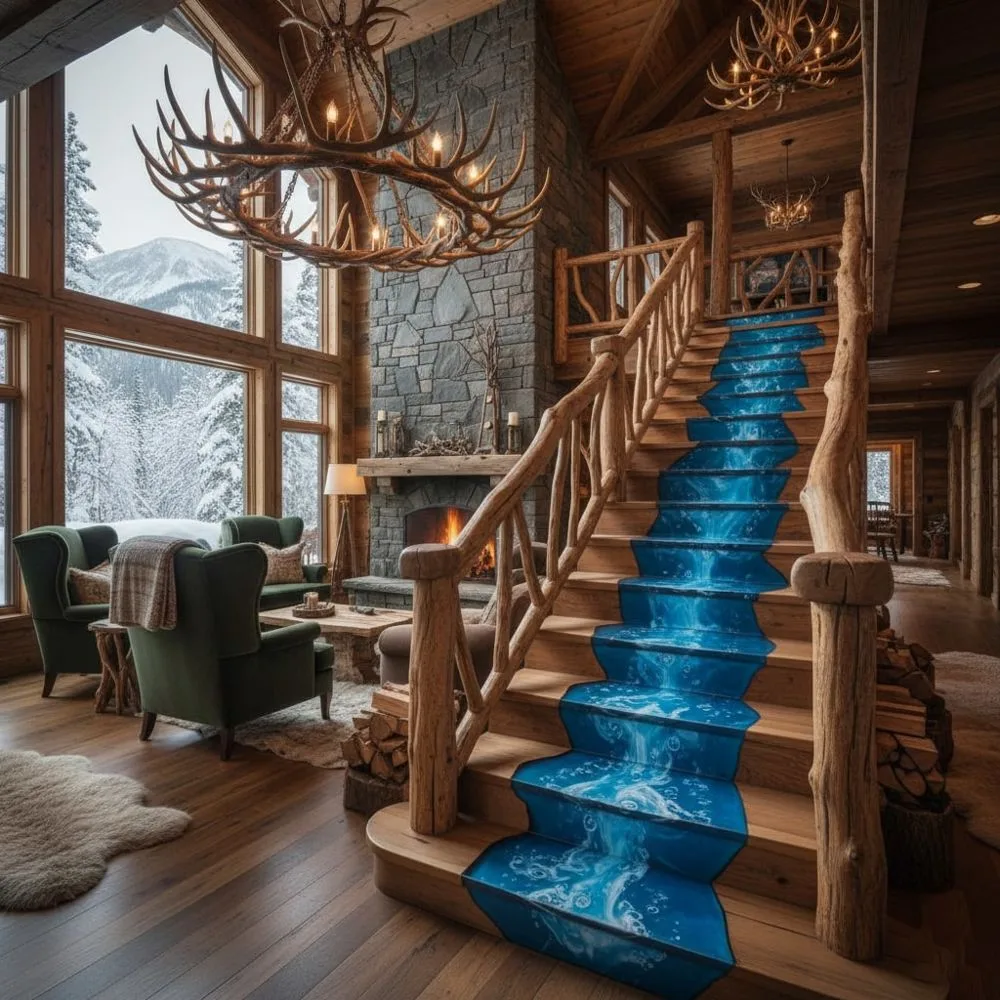When it comes to creating a statement piece that transforms your entire home, few options match the elegance and sophistication of an epoxy river staircase. This modern design trend has captured the imagination of homeowners and interior designers alike, offering a unique blend of artistic expression and functional craftsmanship. Whether you’re renovating an existing staircase or planning a new build, understanding the ins and outs of epoxy river staircases will help you make an informed decision about whether this investment is right for your home.
What Is An Epoxy River Staircase?
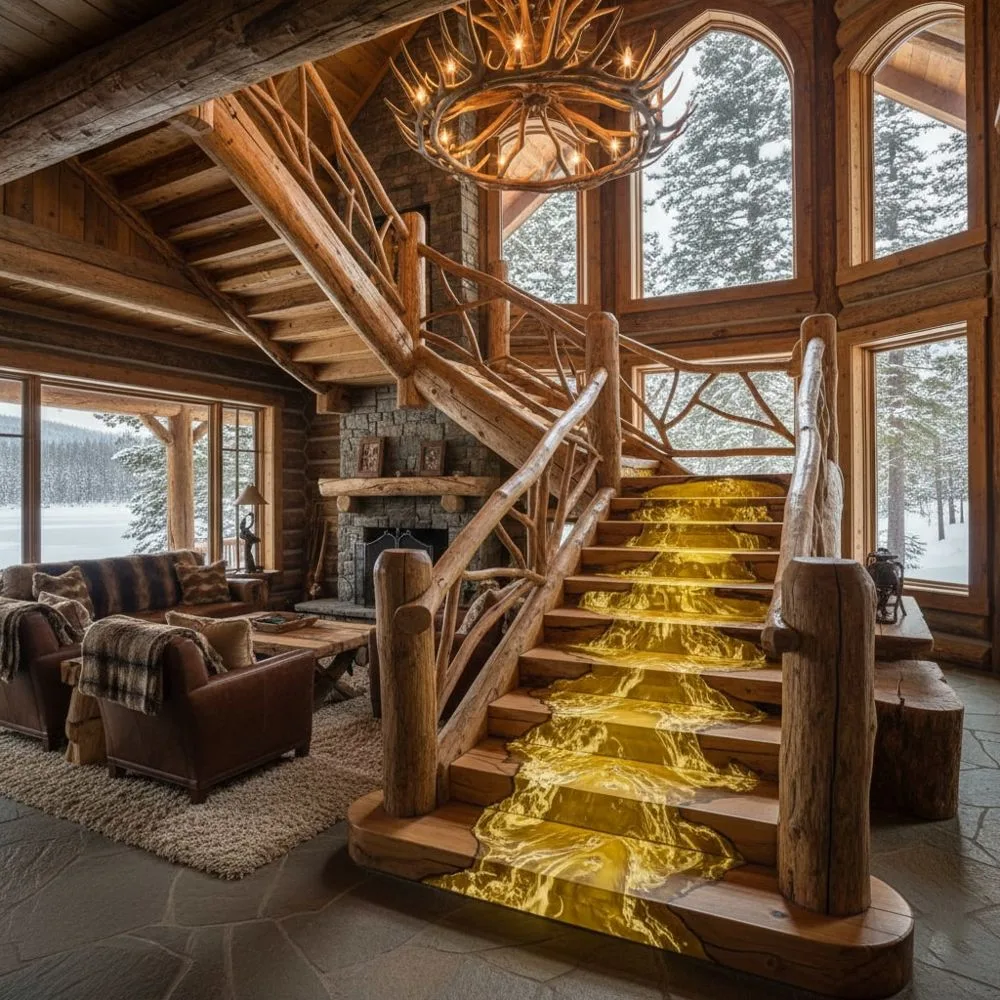
An epoxy river staircase represents a contemporary approach to staircase design that combines wood or concrete with a flowing resin center that mimics the appearance of a natural river. The term “river” refers to the clear or pigmented resin that fills gaps and creates an artistic flowing pattern through the middle or along the sides of each stair tread. This design has become increasingly popular among those seeking to add a touch of luxury and uniqueness to their living spaces.
The concept originated from the broader trend of using epoxy resin in furniture and home decor, but it has evolved into a sophisticated architectural element. What makes an epoxy river staircase particularly appealing is its versatility. You can choose from various colors, effects, and finishes to match your home’s aesthetic, whether you prefer a subtle, natural look or something more dramatic and artistic.
The Artistic Appeal of River Effect Staircases
The artistic component of an epoxy river staircase lies in how it transforms ordinary stairs into a work of art. The flowing resin creates movement and depth, drawing the eye along the staircase in a way that conventional stairs simply cannot achieve. Many homeowners are drawn to this design because it tells a story. Some prefer natural stone effects with earth tones, while others opt for vibrant colors that make bold statements.
The epoxy river staircase concept allows you to incorporate elements of nature or abstract art into your home’s architecture. Some designs include embedded objects like stones, metals, or even recycled materials, making each staircase truly one of a kind. This customization aspect is one of the primary reasons why this design trend has gained such traction in recent years.
Materials Used in Epoxy River Staircase Construction

Understanding the materials involved in creating an epoxy river staircase is essential for appreciating both its beauty and durability. The construction typically involves several key components that work together to create a stunning and long lasting final product.
Primary Building Blocks
The foundation of any epoxy river staircase begins with the structural base, which is usually made from solid wood, plywood, or concrete. Wood provides a warm, traditional aesthetic that pairs beautifully with epoxy resin, while concrete offers a more modern, industrial look. The choice between these materials often depends on your home’s existing architecture and your personal design preferences.
The epoxy resin itself is a two part material that consists of a resin and a hardener. When mixed in the correct proportions, these components create a strong, durable material that can withstand regular use. High quality epoxy formulations are UV resistant, which means they won’t yellow or degrade when exposed to natural light, a critical consideration for staircases that receive regular sunlight.
Pigments, Dyes, and Additives
One of the most exciting aspects of an epoxy river staircase is the ability to customize the color and appearance. Epoxy can be tinted with various pigments and dyes to achieve virtually any color imaginable. Some popular choices include translucent blues and greens that mimic natural water, earth tones that evoke stone, and even metallic finishes that catch light dramatically.
Beyond basic pigments, manufacturers and installers now use glitter, mica powders, and glow in the dark additives to create truly unique effects. These additives allow each epoxy river staircase to reflect the homeowner’s personality and style preferences, making it a true expression of individuality.
Safety and Protective Coatings
For staircases, slip resistance is a critical safety concern. Many professional installations include a non slip coating applied over the epoxy surface. This protective layer maintains the aesthetic appeal while ensuring that the stairs remain safe to walk on, even when they might be wet or when wearing socks.
Top coats and sealers are also commonly applied to protect the epoxy from scratches, stains, and UV damage. These protective layers extend the lifespan of your epoxy river staircase and keep it looking beautiful for years to come.
The Installation Process For Epoxy River Staircases
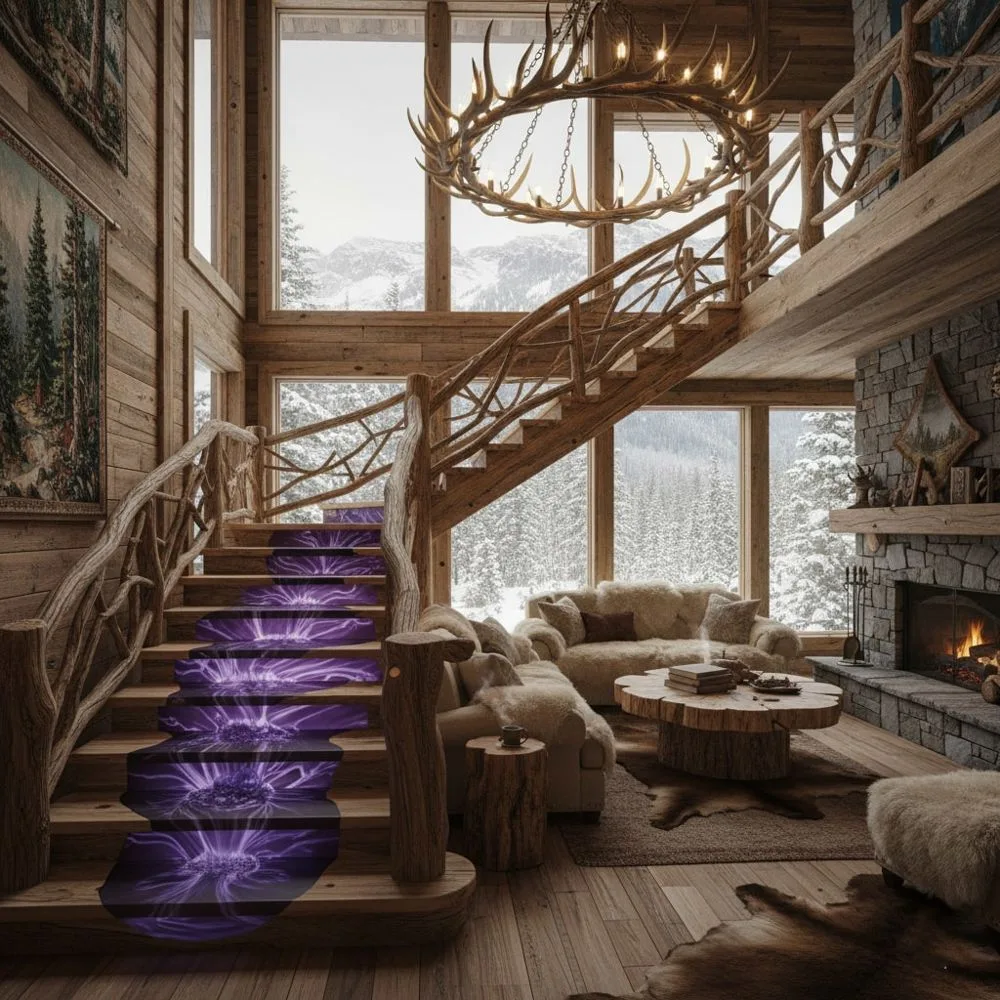
Creating a professional epoxy river staircase is a detailed process that requires skill, precision, and attention to detail. While some ambitious homeowners attempt DIY installations, most recommend hiring experienced professionals to ensure the best results.
Preparation Phase
The first step in installing an epoxy river staircase involves thorough preparation of the wooden or concrete surface. This includes cleaning, sanding, and repairing any cracks or imperfections. The surface must be completely dry and free of contaminants before the epoxy application begins. Any moisture or dirt left on the surface can compromise adhesion and the final appearance of the staircase.
Professionals typically apply a primer or bonding agent to ensure optimal adhesion between the substrate and the epoxy. This preparation step is often underestimated but is absolutely crucial for the longevity and durability of your epoxy river staircase.
Design and Mold Creation
Before the resin is poured, professionals must create molds or dams to contain the epoxy in the desired pattern. For an epoxy river staircase, this typically involves installing barriers along the sides or center of each stair tread. These molds are carefully positioned to create the river effect that gives this staircase style its name.
This is where customization truly comes into play. Professionals work with clients to determine the width and path of the river, as well as the colors and special effects that will be incorporated into the design.
The Pouring and Curing Process
Once the molds are in place and the surface is properly prepared, the mixed epoxy is carefully poured into the designated areas. This requires precision to ensure even distribution and proper consolidation. The epoxy must be worked to remove air bubbles, which can create voids and weaken the final product.
After pouring, the epoxy must cure for a specific period. The curing time varies depending on the type of epoxy used, temperature, and humidity levels, typically ranging from 24 to 72 hours. During this curing period, the staircase must remain completely untouched to allow the resin to properly harden and set.
Finishing Touches
Once the epoxy has fully cured, the molds or dams are removed, and the surface is sanded and finished. This is when non slip coatings and protective sealers are applied. Professional installers will also ensure that all edges are properly finished and that the staircase is safe and ready for use.
Cost Considerations For Epoxy River Staircases
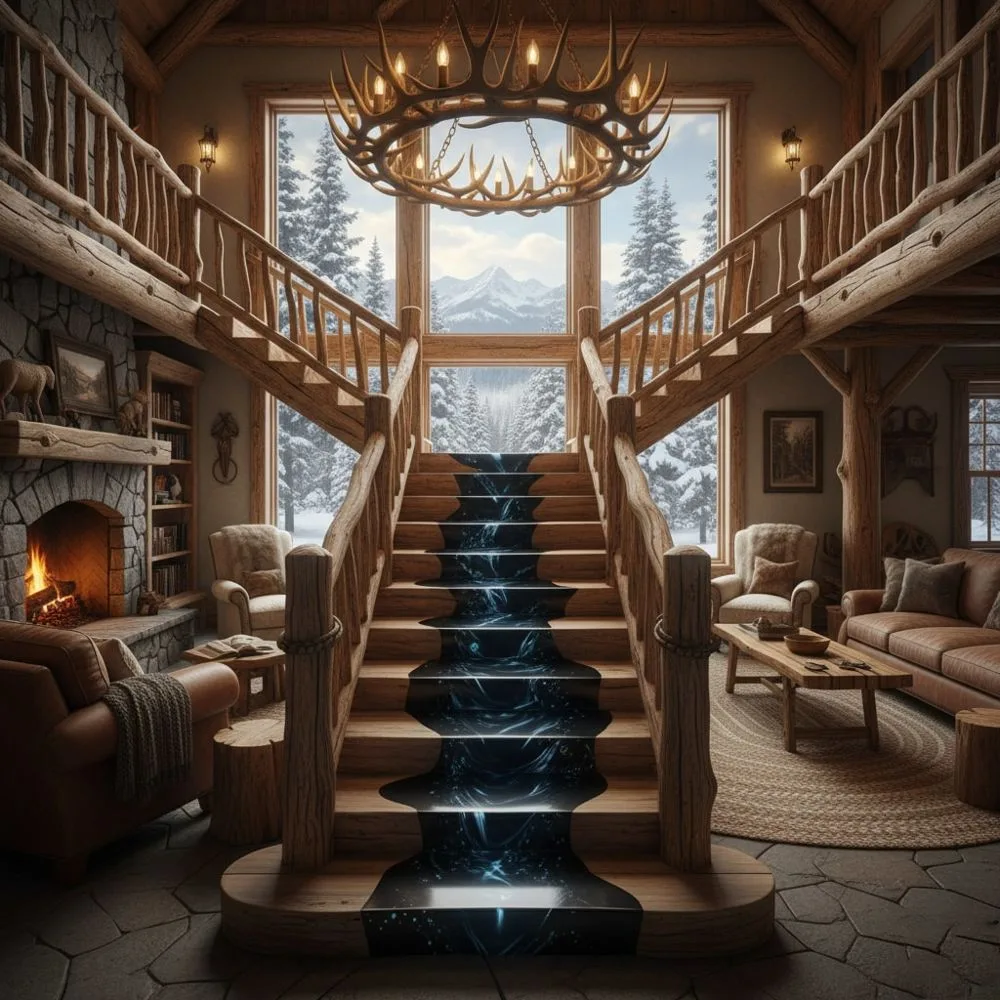
Investing in an epoxy river staircase is a significant decision that involves substantial financial commitment. Understanding the costs involved will help you budget appropriately for this home improvement project.
Factors Affecting Overall Cost
The cost of an epoxy river staircase varies widely depending on several factors. The size of your staircase is perhaps the most obvious variable. A small residential staircase with a simple design will cost considerably less than a large, elaborate installation with multiple colors and special effects.
The complexity of the design also impacts pricing. A simple central river effect costs less than intricate multi colored patterns or installations with embedded objects and artistic elements. The materials selected also matter significantly. Premium epoxy formulations with UV resistance and enhanced durability command higher prices than basic options.
Typical Price Range
For a residential epoxy river staircase installation, you can expect to invest anywhere from 3000 to 15000 dollars or more, depending on the factors mentioned above. A basic installation with a simple design and standard colors typically falls in the 4000 to 8000 dollar range. More elaborate and artistic epoxy river staircase designs can easily exceed 12000 dollars.
Labor vs. Materials
The cost breakdown typically includes both materials and labor. While some homeowners attempt DIY installation to save money, this approach often results in less professional results. Hiring experienced professionals ensures that your epoxy river staircase is installed correctly and meets safety standards.
Maintenance And Longevity
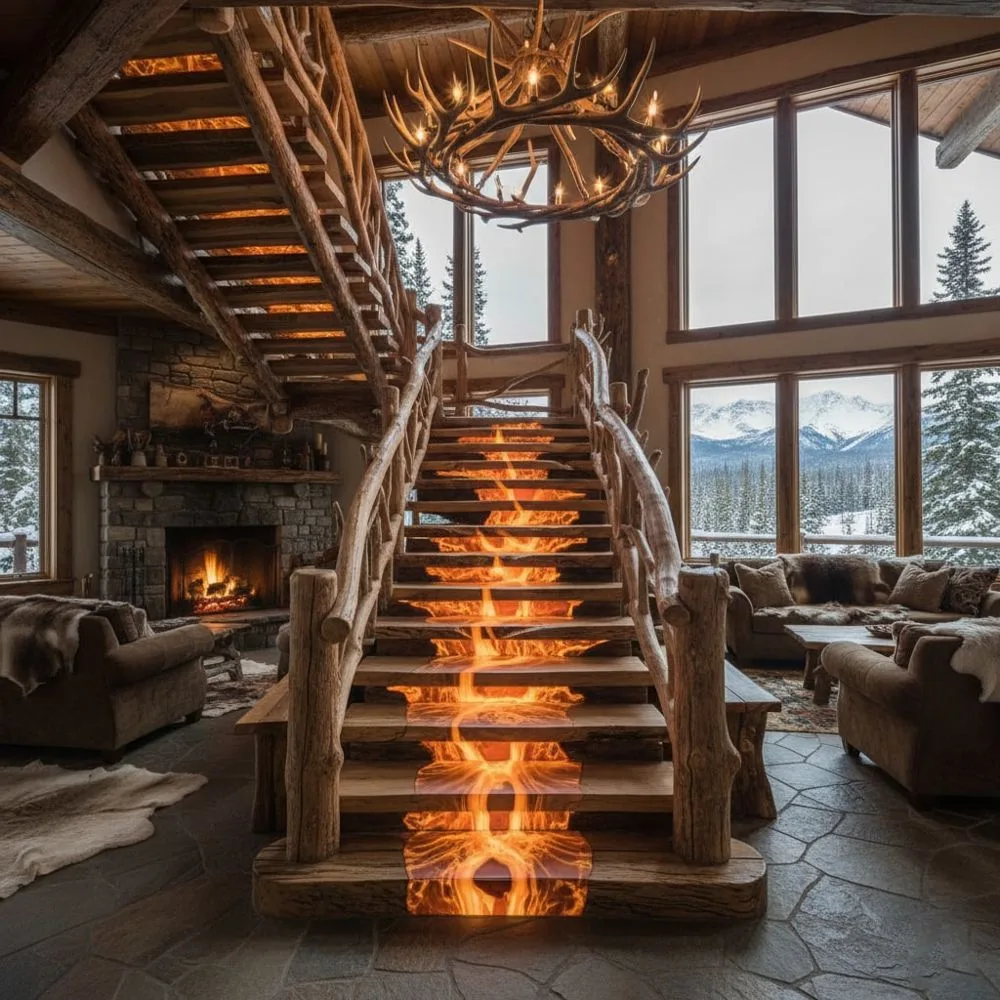
One of the benefits of an epoxy river staircase is that it requires relatively minimal maintenance compared to other staircase materials. However, proper care is essential to keep your investment looking beautiful and functioning properly.
Daily and Regular Care
Regular cleaning with mild soap and water is usually sufficient to keep your epoxy river staircase looking great. Avoid using abrasive cleaners or harsh chemicals, as these can damage the protective coatings. A soft microfiber cloth or mop is ideal for regular cleaning.
Pay attention to spills immediately, as certain liquids can potentially stain epoxy if left to sit. This is why the protective sealers applied during installation are so important. They create a barrier that makes the staircase more resistant to staining and damage.
Long Term Durability
With proper care, a well made epoxy river staircase can last 15 to 20 years or even longer. The epoxy resin itself is extremely durable and resistant to damage. However, the protective coatings may need to be reapplied every 5 to 10 years, depending on foot traffic and usage patterns.
Unlike natural stone or hardwood floors, epoxy doesn’t scratch as easily and doesn’t require refinishing in the traditional sense. This makes it an economical choice in the long run, despite the higher initial investment.
Design Ideas And Inspiration For Your Home
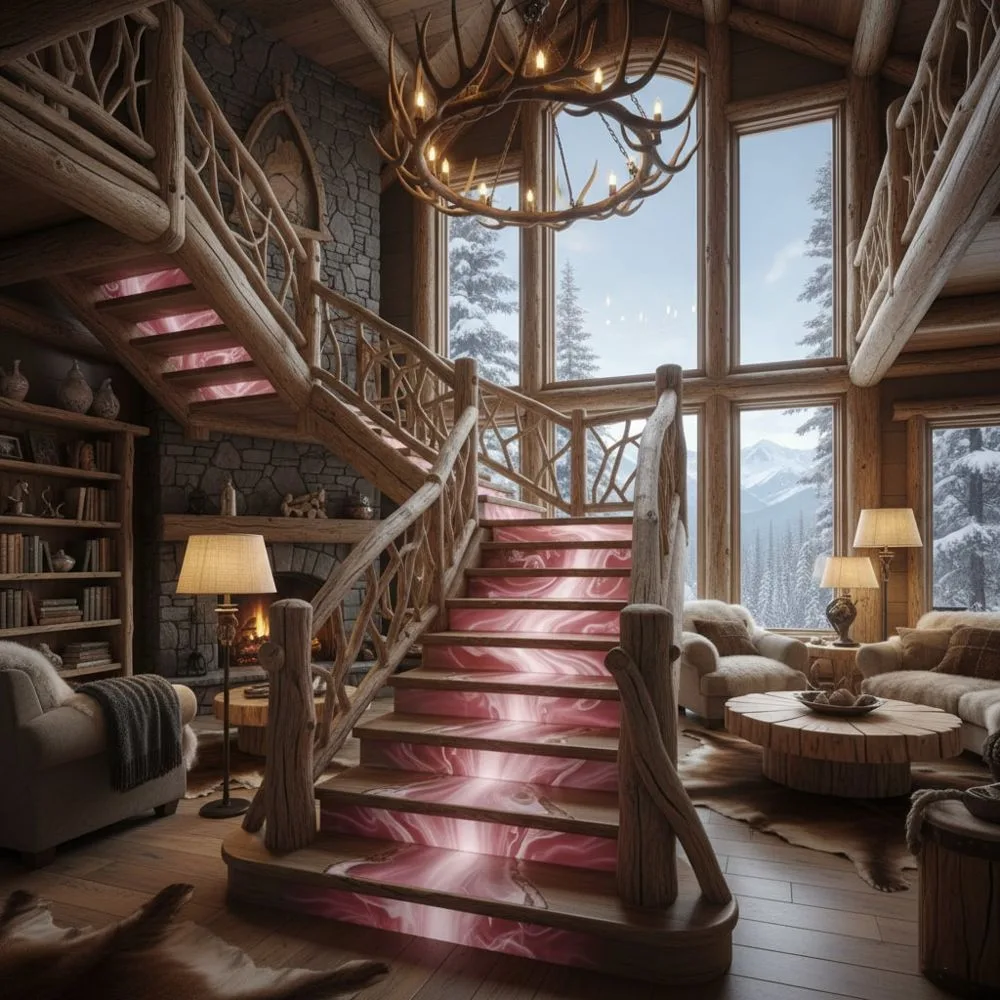
The versatility of epoxy river staircases means there’s virtually no limit to the design possibilities. Whether your home features modern, rustic, industrial, or traditional aesthetics, there’s an epoxy river staircase design that can work beautifully.
Modern and Contemporary Homes
For contemporary spaces, consider translucent resin in cool tones like light blue or grey. These choices create a sophisticated, elegant look that complements minimalist interiors. Some designers are experimenting with 3D effects, embedding layers of different colored resins to create depth and visual interest.
Rustic and Natural Designs
If your home features rustic or farmhouse aesthetics, earth toned epoxy with embedded wood chips or stone can create a beautiful, organic look. These designs often incorporate warm browns, greens, and cream colors that evoke natural landscapes.
Bold and Artistic Statements
For those who want their epoxy river staircase to truly stand out, bold colors and multi layered designs are options. Some homeowners incorporate glow in the dark features for nighttime drama, while others embed meaningful objects or materials that reflect their personal interests and lifestyle.
Environmental And Health Considerations

As with any home improvement material, it’s important to consider the environmental and health implications of epoxy river staircases. Modern epoxy formulations have become increasingly eco friendly and safe compared to earlier versions.
Most professional installations use low VOC or zero VOC epoxy products that minimize the release of harmful fumes. This is particularly important in residential settings where family members will be breathing the air. Ensure that your installer uses products that meet environmental and health standards.
From an environmental perspective, epoxy resin can be sourced from sustainable suppliers, and some manufacturers now produce bio based resin alternatives. Additionally, the longevity of epoxy river staircases means fewer replacements and less waste over time compared to materials that deteriorate more quickly.
Elevate Your Home With a Stunning Epoxy River Staircase Transformation
An epoxy river staircase represents far more than just a functional pathway between floors. It’s an investment in beauty, craftsmanship, and personal expression that transforms your home into something truly special. Whether you’re drawn to the artistic possibilities, the modern aesthetic, or simply the unique statement it makes, an epoxy river staircase can become the centerpiece of your home’s design.
The decision to install an epoxy river staircase should be made carefully, considering factors like cost, maintenance requirements, and how it fits with your overall home design. However, for those who take the leap, the results can be absolutely stunning. A professionally installed epoxy river staircase not only adds to your home’s visual appeal but can also increase its value and create a lasting impression on visitors.
By understanding the materials, installation process, costs, and maintenance requirements, you’re better equipped to make an informed decision about whether this elegant design trend is right for your home. Take time to explore different designs, consult with experienced professionals, and envision how an epoxy river staircase could transform your living space. When executed properly, this modern design element becomes a timeless feature that you’ll enjoy for decades to come.

